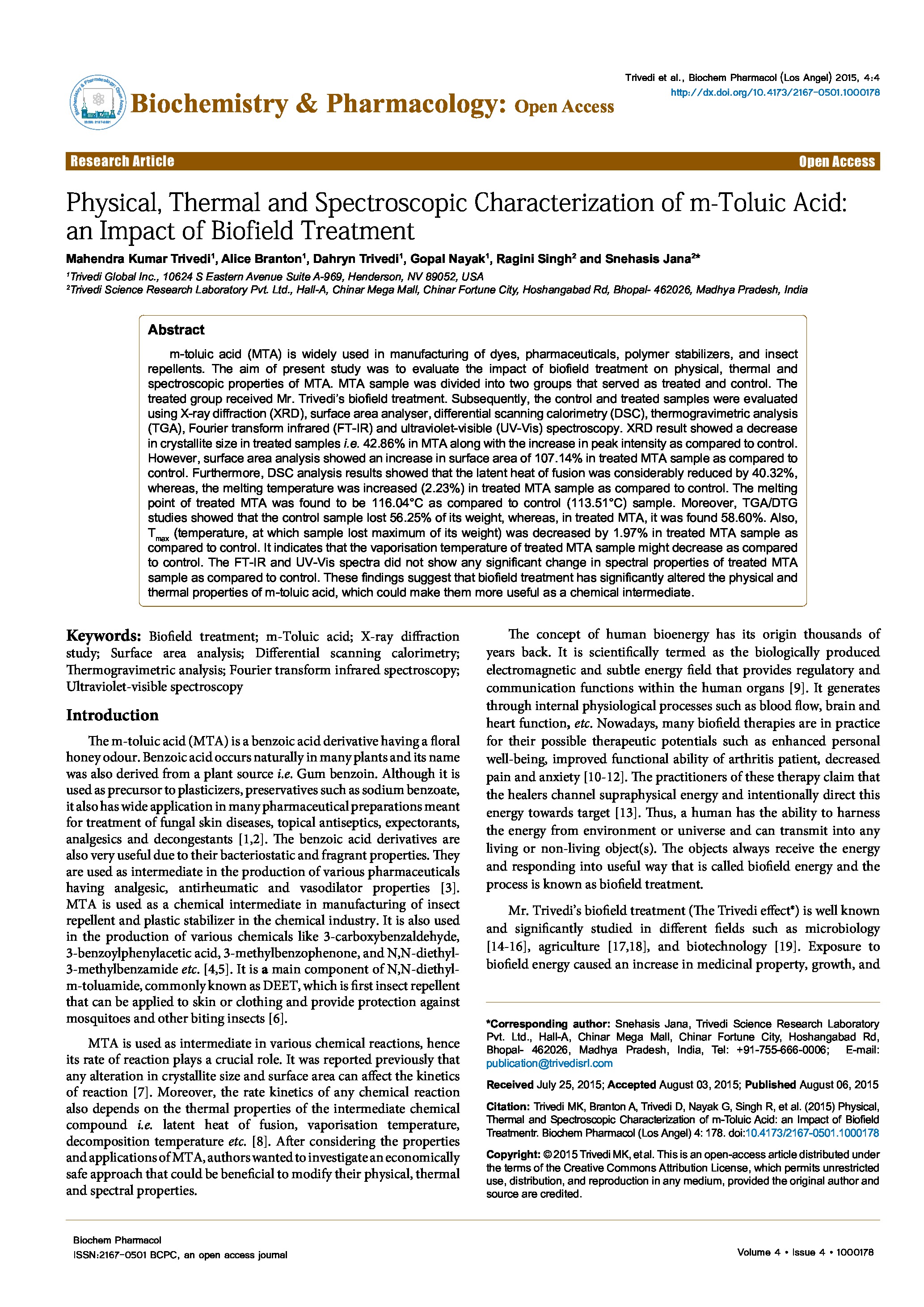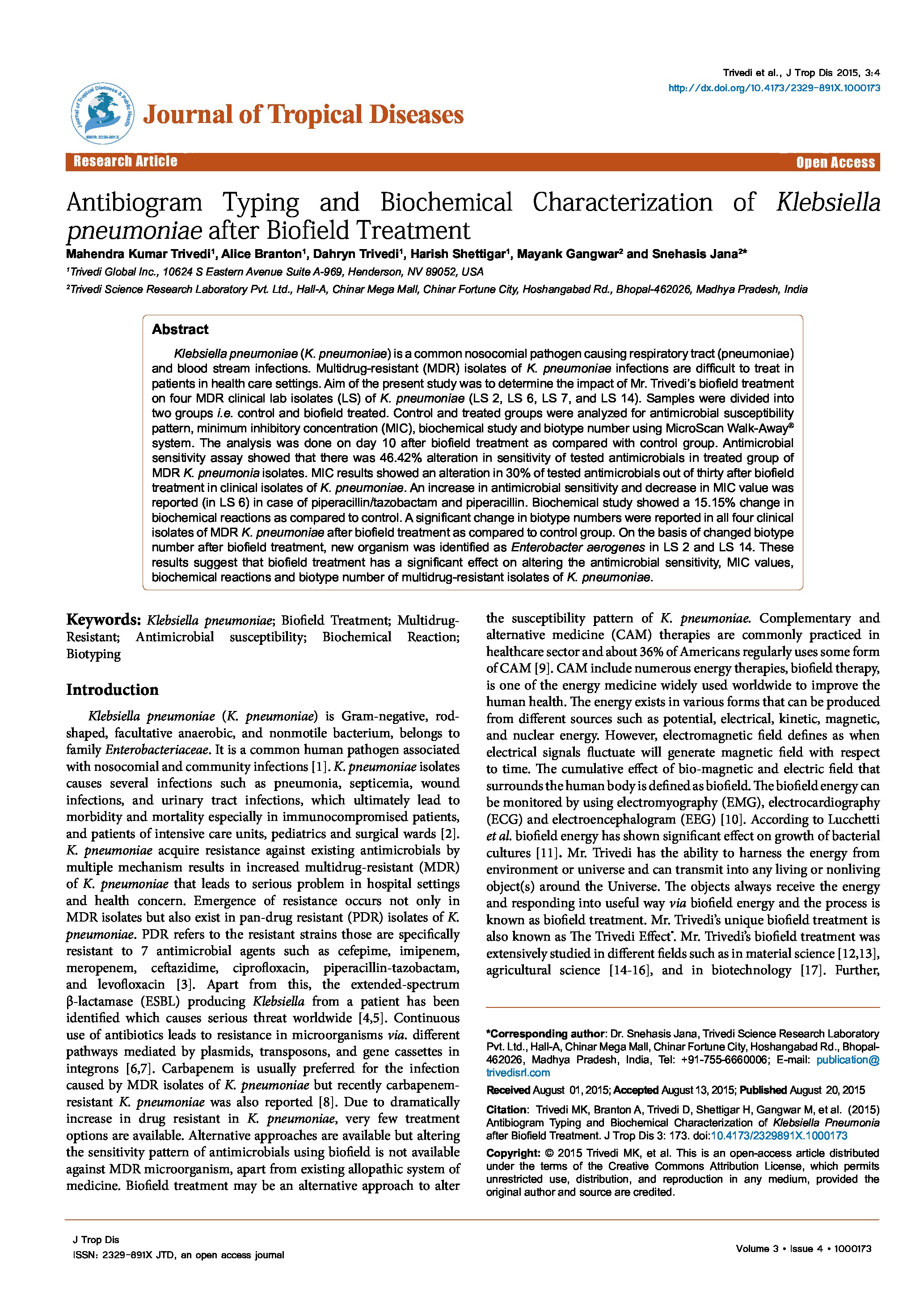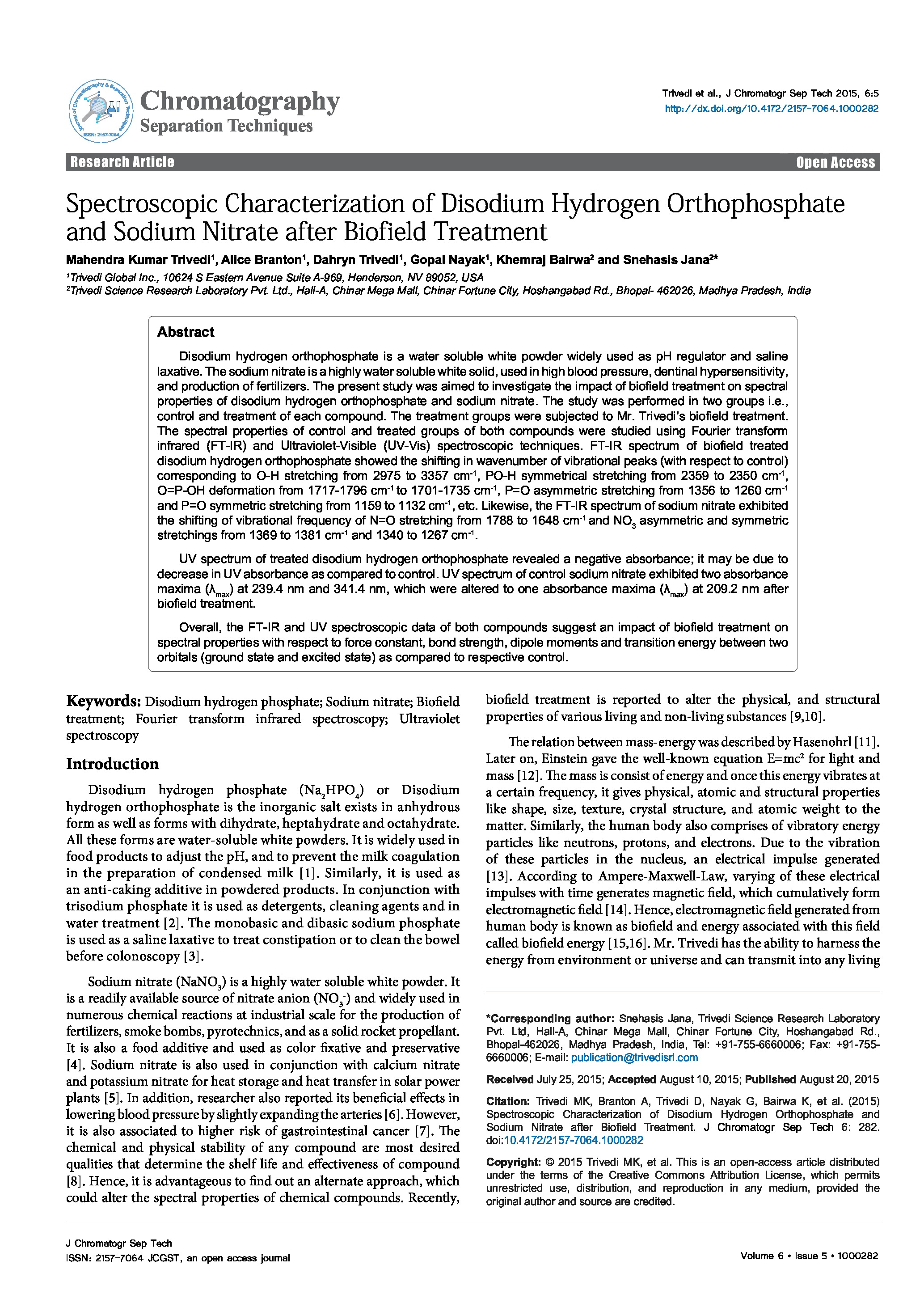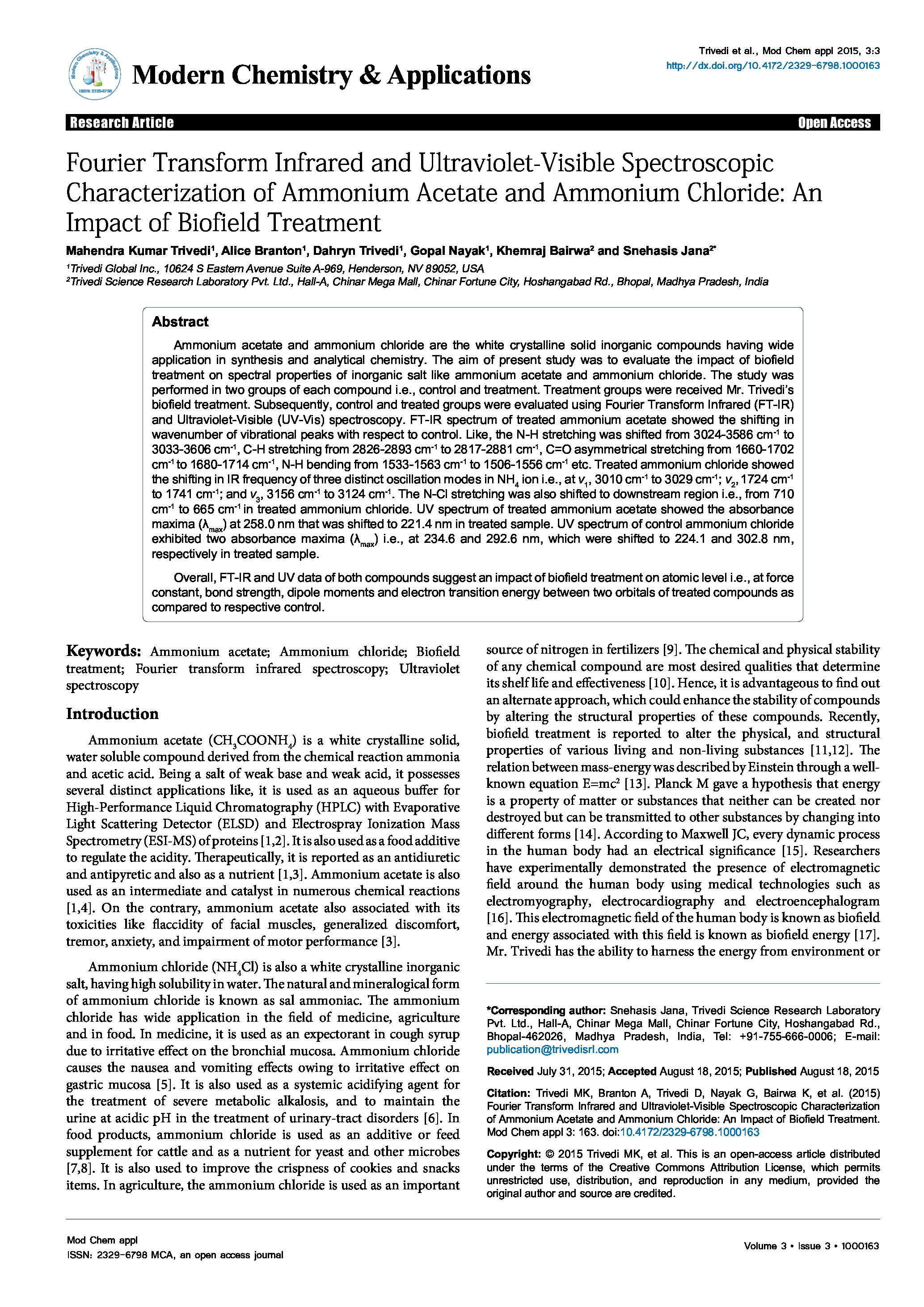Date of upload:
23.12.2016
Co-author:
Mahendra Kumar Trivedi, Dahryn Trivedi, Gopal Nayak, Ragini Singh, Snehasis Jana
Abstract:
m-toluic acid (MTA) is widely used in manufacturing of dyes, pharmaceuticals, polymer stabilizers, and insect repellents. The aim of present study was to evaluate the impact of biofield treatment on physical, thermal and spectroscopic properties of MTA. MTA sample was divided into two groups that served as treated and control. The treated group received Mr. Trivedi’s biofield treatment. Subsequently, the control and treated samples were evaluated using X-ray diffraction (XRD), surface area analyser, differential scanning calorimetry (DSC), thermogravimetric analysis (TGA), Fourier transform infrared (FT-IR) and ultraviolet-visible (UV-Vis) spectroscopy. XRD result showed a decrease in crystallite size in treated samples i.e. 42.86% in MTA along with the increase in peak intensity as compared to control. However, surface area analysis showed an increase in surface area of 107.14% in treated MTA sample as compared to control. Furthermore, DSC analysis results showed that the latent heat of fusion was considerably reduced by 40.32%, whereas, the melting temperature was increased (2.23%) in treated MTA sample as compared to control. The melting point of treated MTA was found to be 116.04°C as compared to control (113.51°C) sample. Moreover, TGA/DTG studies showed that the control sample lost 56.25% of its weight, whereas, in treated MTA, it was found 58.60%. Also, Tmax (temperature, at which sample lost maximum of its weight) was decreased by 1.97% in treated MTA sample as compared to control. It indicates that the vaporisation temperature of treated MTA sample might decrease as compared to control. The FT-IR and UV-Vis spectra did not show any significant change in spectral properties of treated MTA sample as compared to control. These findings suggest that biofield treatment has significantly altered the physical and thermal properties of m-toluic acid, which could make them more useful as a chemical intermediate.




